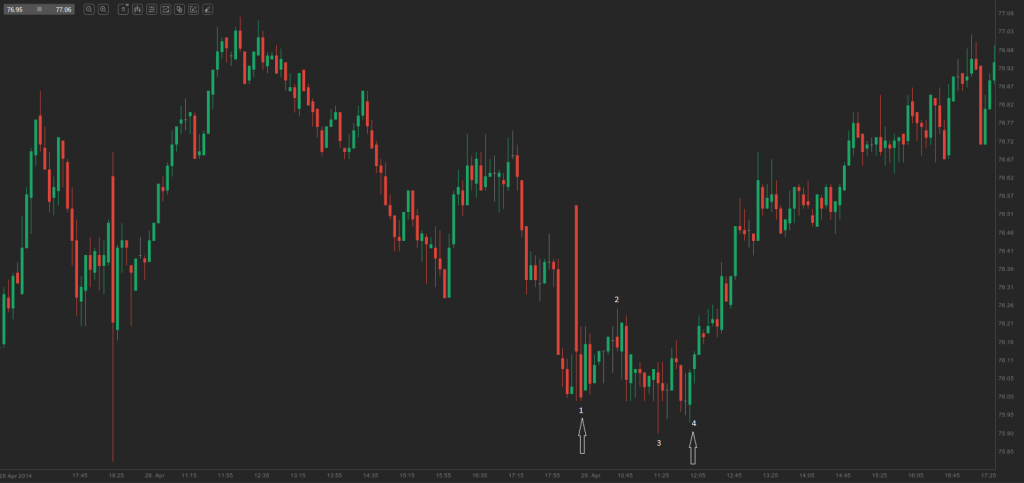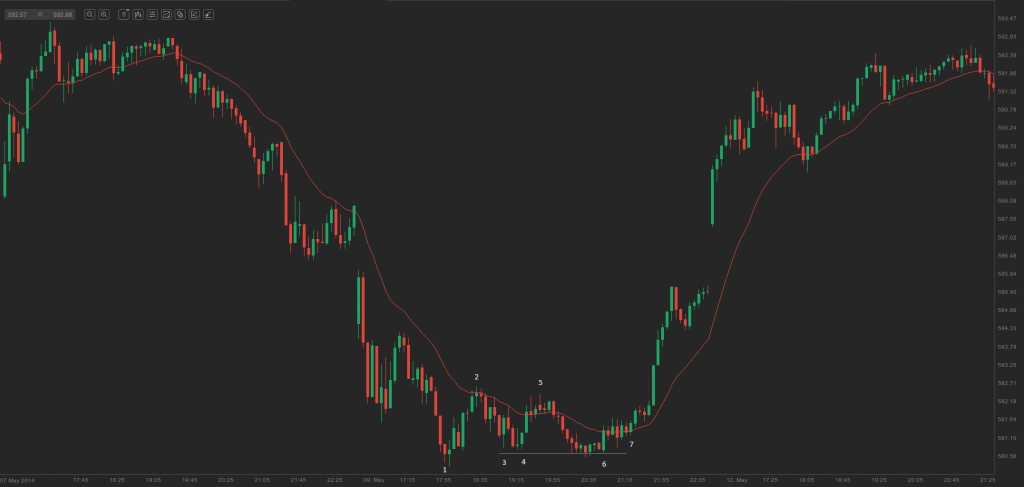Double Bottom Pullbacks
This lesson will cover the following
- What are they and how to interpret them?
- An example
In case a double bottom is formed after a fall in prices and a pullback occurs, testing the area slightly above the double bottom low, this is called a Double Bottom Pullback setup to go long. There have been two attempts for a move to the downside, but both times the bulls overpowered the bears at almost one and the same price. The double bottom does not necessarily need to be perfect, as we discussed in our Forex Trading guide. In case the second bottom fails to at least reach the first one, there is a chance that the bottom may actually produce a two-legged sideways correction or correction up. Now a trader should look for an opportunity for a long scalp, instead of a long swing.
The Double Bottom Pullback setup can be considered as a Triple Bottom, while the third move to the downside was not sufficiently strong to form a new low. There is one more way to look at this setup – as two failed attempts to surpass the prior extreme level, which usually causes a reversal.
There is a view among technical analysis experts that triple bottom and triple top formations always fail to lead to a reversal and, thus, become continuation patterns. However, a requirement for that is the three extremes to reach identical price levels. And it is a rare occurrence.
The Double Bottom Pullback setup leads to a reversal, unlike the Double Bottom Bull Flag, which is a trend continuation setup. Both of them provide opportunities for long entries in the market, but however, the first marks the beginning of a new trend, while the second occurs within an already active trend (or after at least one strong leg of a trend).
A mirror image of the setup is the Double Top Pullback, which includes the formation of a Double Top in an uptrend, followed by a pullback, testing the area slightly below the double top high. The Double Top Pullback is a setup to go short.
On the 5-minute chart of ADS above bar 4 outside bar was also a signal bar for a long entry, while the whole pattern was a Double Bottom Pullback. Bar 3 had a low slightly below the low of bar 1, but this is a preferable circumstance in these patterns.
On the 5-minute chart of AAPL above bar 1 marked the end of a steep second leg to the downside and was a probable reversal setup. Despite that the move to the upside to bar 2 was small, neither bar 3 low, nor bar 4 low managed to exceed the prior low and these two bars produced a small Double Bottom Bull Flag. Bar 6 low was slightly lower than that of bar 3, but could not take out the low of bar 1, so, bars 3 and 6 produced a larger Double Bottom Bull Flag. Institutional traders were probably safeguarding the low of bar 1 instead of trying to trigger the protective stops. This could be considered as an indication that these traders supposed the price was climbing. Bar 7 was a M2B setup.

